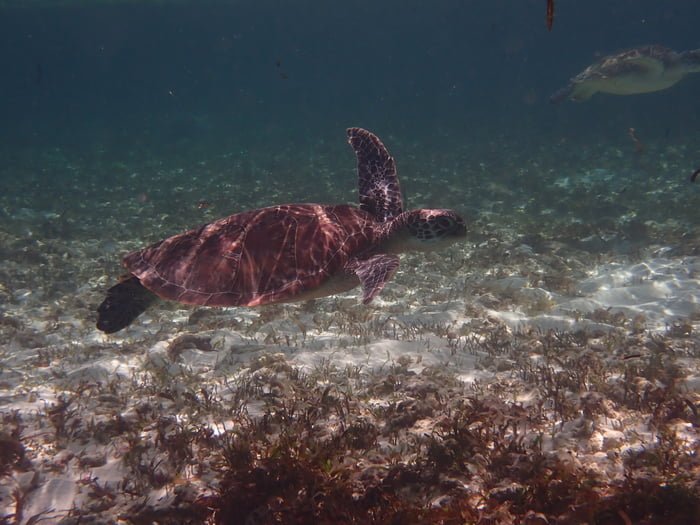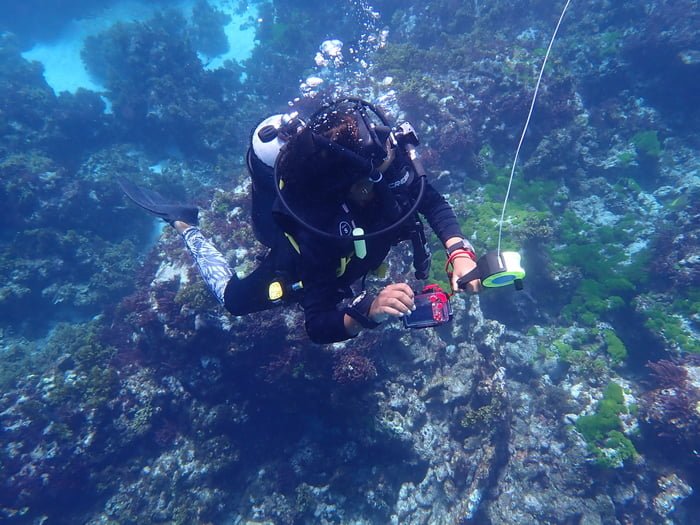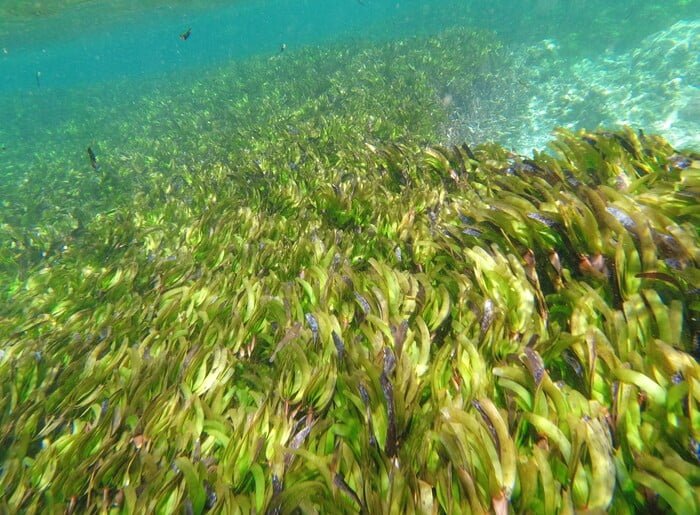The Campaign to Protect Seagrass in the Seychelles
Written by: Dr Jeanne A Mortimer (Scientific Advisor, SeyCCAT) and Annike Faure (SeyCCAT)
Seagrass is an important ecosystem globally and an ally in the fight against climate change. Storing around 10% of all organic carbon in the ocean and protecting coastlines amid rising storm surges, seagrass meadows are an invaluable resource for oceanic states like Seychelles. Off the coast of East Africa, the Seychellois government has a vested interest in seagrass conservation.
In 2021, key research and policy frameworks to support its protection were being put in place. But scientists recognized that local involvement was critical for the longevity of seagrass conservation efforts, and the public was indifferent. The reason lay in its most commonly used local name – seagrass was called ‘gomon’ in Seychellois Creole, roughly translated to slimy and plantlike. And ‘gomon’ was everywhere.
“There’s ‘gomon’ in the rivers, there’s ‘gomon’ in the forest and the mud. If you are calling seagrass by the same name as the scum between tiles in your bathroom it’s not going to create love in the hearts of the general public.”
(Dr. Jeanne A Mortimer, Seychelles Seagrass Mapping and Carbon Assessment project)
Seagrass supports 20% of the world’s largest fisheries, contributing to the livelihoods of coastal communities. These marine habitats are a critical ecosystem for marine biodiversity, with organisms ranging from fish, crabs, and sea anemone depending on them for shelter, to larger animals like dugong and sea turtles grazing on them for nutrients.
With their role in climate adaptation and mitigation, seagrass can be integrated into climate policy – countries’ can include them in their nationally determined contribution to the Paris Agreement. However, Seychelles lacked a field-validated seagrass map and information on how much carbon these meadows stored. As a result, in 2020 a highly technical research project was launched to study the countrywide distribution and carbon stored in seagrass of Seychelles. The effort marked a collaboration between The University of Oxford, The Seychelles Conservation and Climate Adaptation Trust (SeyCCAT), The Pew Charitable Trusts, The University of Seychelles, Island Conservation Society, and other organizations.

Credit: Seychelles Seagrass Mapping and Carbon Assessment Project
Credit: Seychelles Seagrass Mapping and Carbon Assessment Project
The international team of scientists relied on countrywide satellite imagery to map seagrass location. To check against satellite imagery inaccuracies, which might occur because of cloud cover or habitat misidentification, field teams verified data on the ground. Through snorkel, scuba diving, and drop cam surveys of deep or expansive habitats across Seychelles, researchers took georeferenced photos and collected information on seagrass density and species. Researchers also collected soil samples from seagrass sites and calculated how much carbon they stored back at the lab. Once both satellite imagery and field data were complete, researchers analyzed the data to produce the region’s first field-validated seagrass map and carbon stock estimates.

Credit: Seychelles Seagrass Mapping and Carbon Assessment Project
As one of the first countries to produce field-validated seagrass maps, Seychelles was positioning itself as a global leader. But if the general public was going to promote its conservation, seagrass needed an official name in Seychellois Creole.
SeyCCAT’s Coastal Wetlands and Climate Change Project Team headed the national campaign to find an official Creole word for seagrass and its lifeforms. The national campaign was hard to miss.
“If you were on social media, reading the paper, watching the national TV station, or listening to the radio you got the message,” noted Annike Faure, Project Manager.
Seagrass wasn’t just 'gomon', it was an emerald underwater city teeming with marine life.
Credit: Seychelles Seagrass Mapping and Carbon Assessment Project
SeyCCAT’s aim in this project phase was to keep a record of words Seychellois were already using to describe the habitat. Since fishermen were the most familiar with these underwater flowering plants, the team allocated extra time and resources to ensure their opinion was included. Working around COVID-19 restrictions, district administrators interviewed 54 fishermen who added to the list of currently used names.
The Emerald Committee, a task force of marine and plant biologists, fisheries experts, and linguists, supported the project throughout. Where local names for some seagrass forms did not exist, members of this committee circulated photos among Seychellois to identify new names. In total, over 876 candidate names were submitted. After sifting through the submissions and incorporating feedback, the team submitted a final list of names to the Seychelles Creole Academy for review.

Credit: Seychelles Seagrass Mapping and Carbon Assessment Project
In the end, two names that were previously informally in use were formally recognized for seagrass: Zerb Lanmer and Gomon Zerb.
Translated as ‘grass from the sea’, Zerb Lanmer made sense from a linguistic and scientific perspective, while Gomon Zerb emerged as the more widely used term The 12 species of seagrass were divided into five lifeforms of distinguishable groups and were also given official names. Gomon zerb torti (turtle seagrass), a name already in use, highlights the fact that green turtles (‘torti’) feed on this seagrass life form. Gomon zerb levantay (fan seagrass) was a new name submitted and agreed upon by members of the general public and has fanlike clusters of leaves atop its stem. Official names draw the attention of the general public, making it easier for people to understand these mysterious plants beneath the sea, fight for their protection, and feel a sense of pride in the marine life of the Seychelles.
“We do not have supreme authority over language,” Ronia Anacoura from the Academy acknowledged, “It’s the people who define the use of language and its evolution”.
Following on the scientific research to map seagrass and estimate carbon stored combined with the public interest generated by naming seagrass, the Government of Seychelles committed to protect 100% of seagrass habitats by 2030 in its updated NDC.
With each generation, Seychellois can come to the water and point to Zerb Lanmer/Gomon Zerb, defining it as a treasure to protect.
Through local involvement, seagrass conservation is built to last.
Credit: Seychelles Seagrass Mapping and Carbon Assessment Project